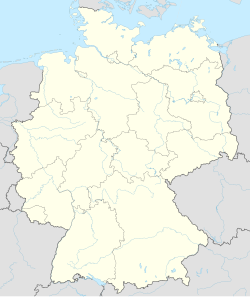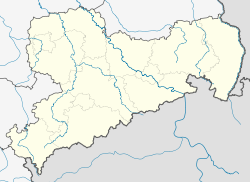Top Qs
Timeline
Chat
Perspective
Lohsa
Municipality in Saxony, Germany From Wikipedia, the free encyclopedia
Remove ads
Lohsa (German, pronounced [ˈloːza]) or Łaz (Upper Sorbian, pronounced [ˈwas] ⓘ) is a municipality in the district of Bautzen, in Saxony, in eastern Germany.
The municipality is part of the recognized Sorbian settlement area in Saxony. Upper Sorbian has an official status next to German, all villages bear names in both languages.
Remove ads
Demographics
The Sorbian population of the village was 358 in 1840, 355 in 1860, and 400 in 1880.[3]
Villages
Several villages belong to the municipality (names given in German/Upper Sorbian):
- Dreiweibern/Tři Žony
- Driewitz/Drěwcy
- Friedersdorf/Bjedrichecy
- Groß Särchen/Wulke Ždźary
- Hermsdorf/Spree/Hermanecy
- Koblenz/Koblicy
- Lippen/Lipiny
- Litschen/Złyčin
- Lohsa/Łaz
- Mortka/Mortkow
- Riegel/Roholń
- Steinitz/Šćeńca
- Tiegling/Tyhelc
- Weißig/Wysoka
- Weißkollm/Běły Chołmc
Economy and Infrastructure
Education
The municipality of Lohsa has a primary school in Groß Särchen and a secondary school.
Traffic
To the east of the municipality runs the B 156, to the west the B 96, via which the B 97 to the northwest can be reached. Lohsa is connected to the Niesky-Hoyerswerda(-Falkenberg (Elster)-Roßlau (Elbe)) railway line by a demand stop. The RB 64 line (Hoyerswerda-Görlitz) operates here as Seenland-Neisse-Shuttle.
Notable people
- Handrij Zejler (1804–1872), Sorbian writer and activist, lived and died in Łaz[3]
- Martha Israel (1905–c. 1967), politician[4]
Gallery
- Municipal building
- Church
- School
- Castle in Weißig/Wysoka
See also
References
External links
Wikiwand - on
Seamless Wikipedia browsing. On steroids.
Remove ads








